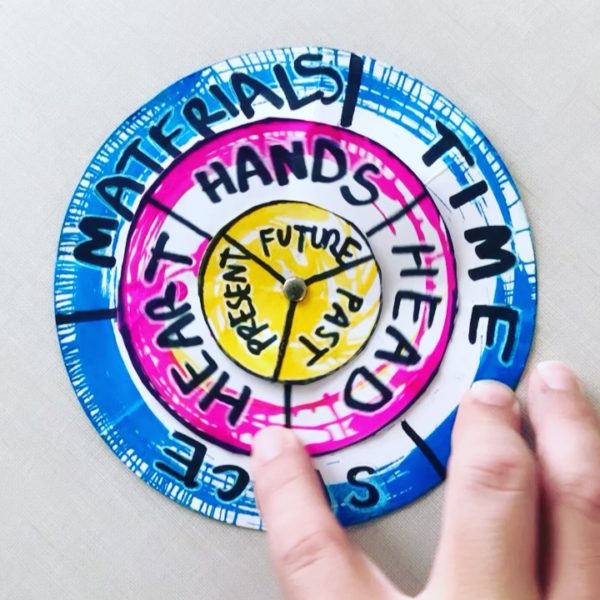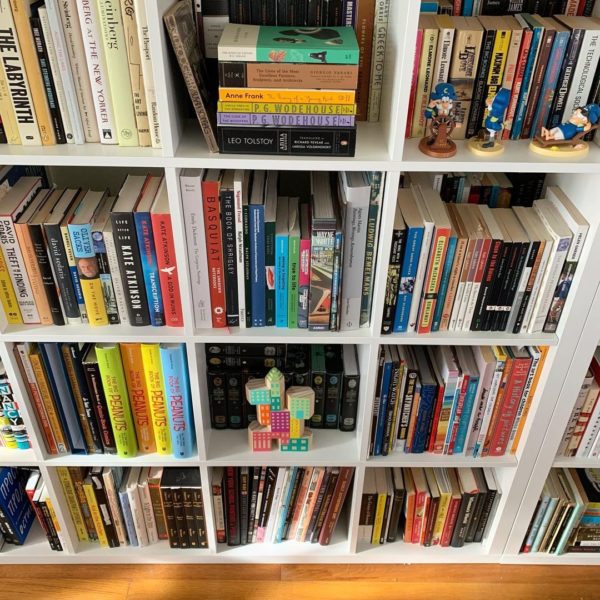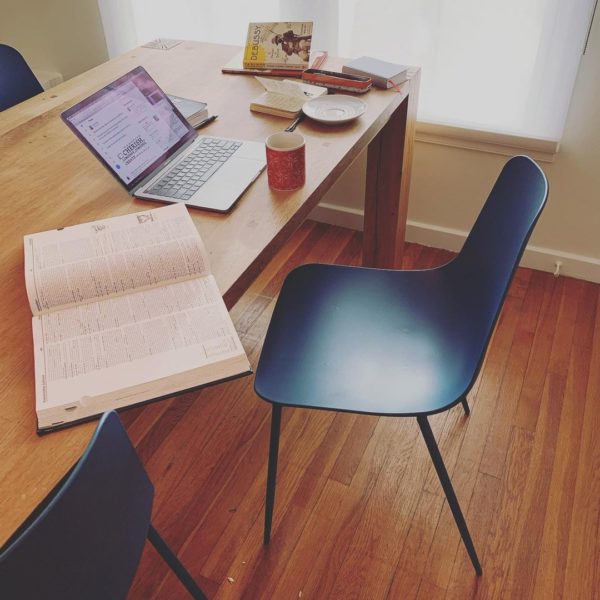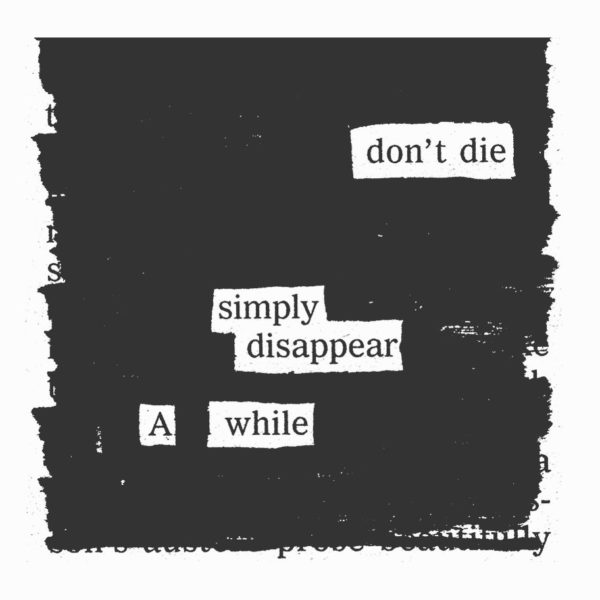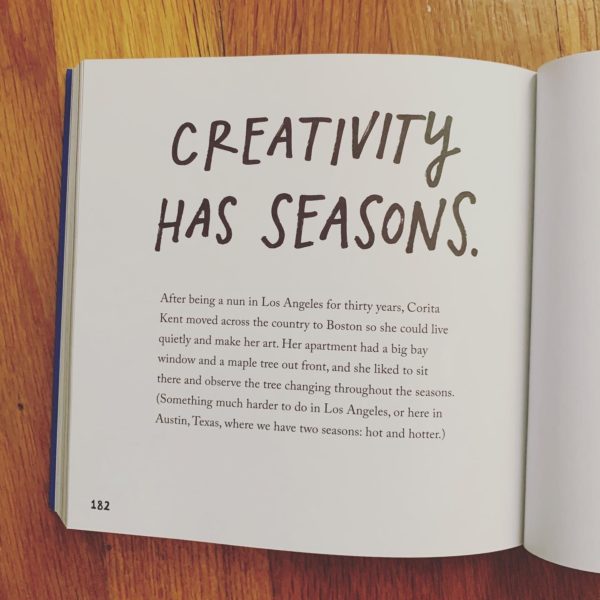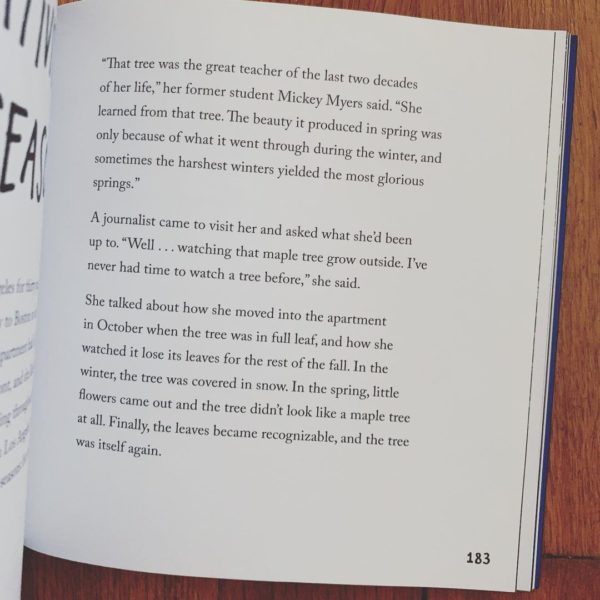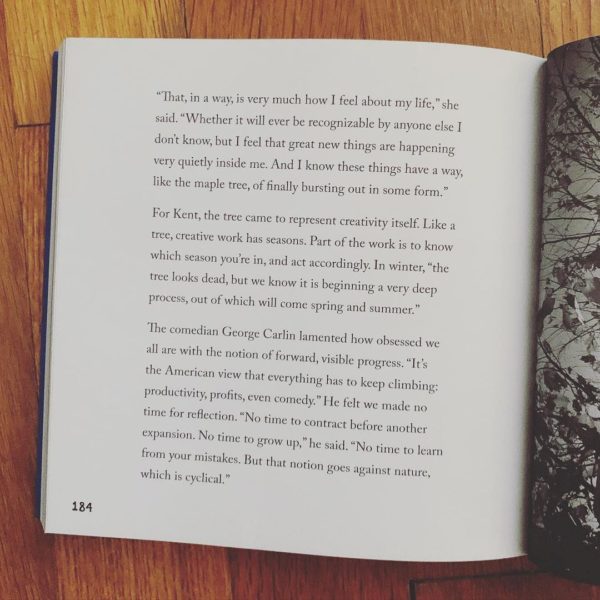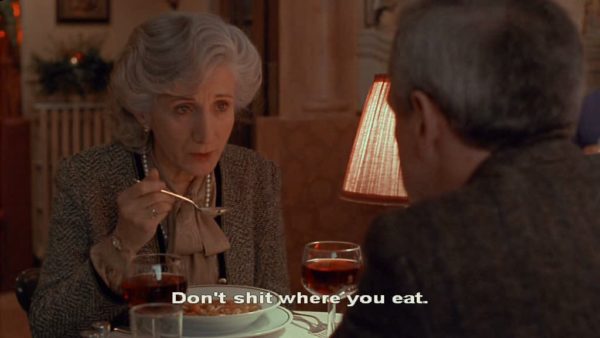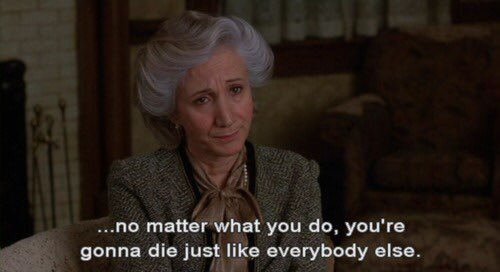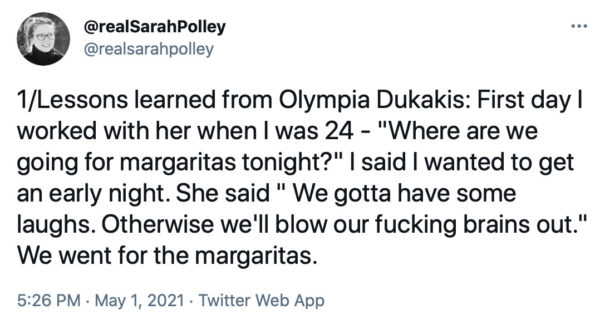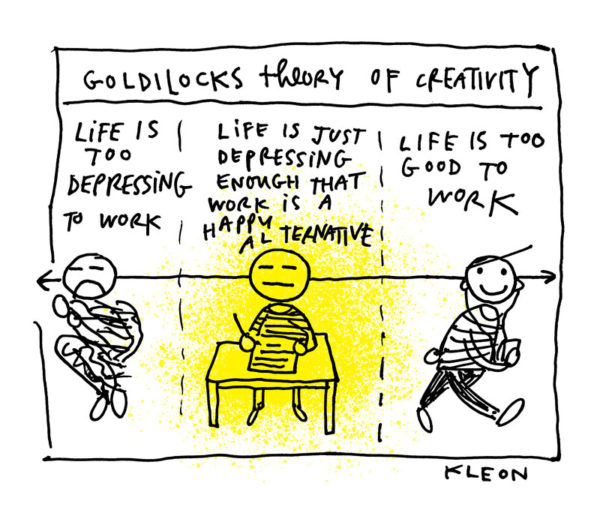
I drew this comic in my diary yesterday. With all this talk of languishing and wintering, I have felt my spirit lifting a bit this week. I have a sensation, quite possibly inaccurate, that the day-to-day of my life is moving out of the crushing into the merely annoying. This is usually a very ripe condition in which to grow my efforts! If life is too crushing, it’s hard to get to work, and if life is too good, who the hell wants to work?
The hassles of work become a welcome distraction from the hassles of life. Of course, if I want to sustain any kind of lasting effort, I have to work every day, no matter what is going on, and expect nothing, but the applying of ye ass to chair.
Camus: “One must imagine Sisyphus happy.”
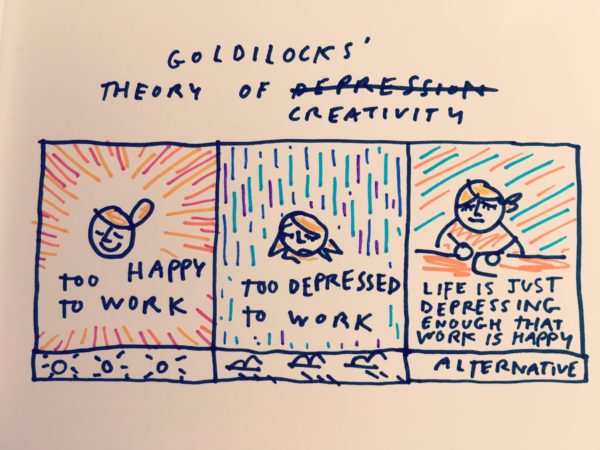
This was true before the pandemic, by the way. The comic at the top of this post is a redrawing of this comic I drew in my diary four years ago.
Life is a porridge. Some porridge is too hot. Some porridge is too cold.
This porridge is just right.


